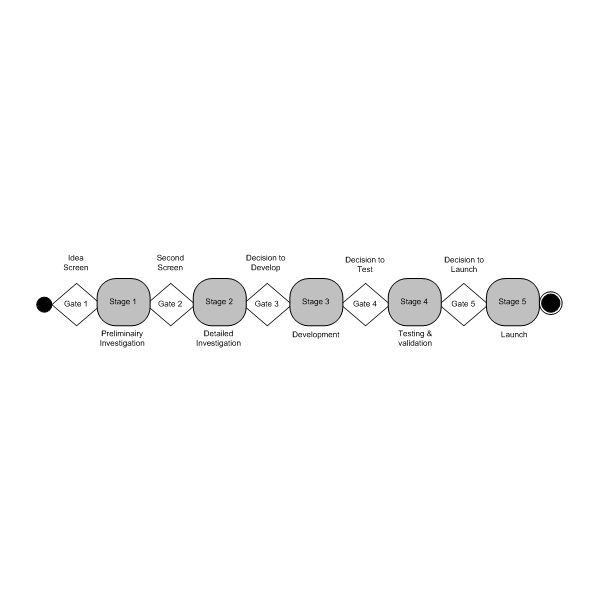When companies recognize the need to begin developing processes for project management, the starting point is normally the stage-gate process. The stage-gate process was created because the traditional organizational structure was designed primarily for top-down, centralized management, control, and communications, all of which were no longer practical for organizations that use project management and horizontal work flow. The stage-gate process eventually evolved into life-cycle phases.
Just as the words imply, the process is composed of stages and gates. Stages are groups of activities that can be performed either in series or parallel based upon the magnitude of the risks the project team can endure. The stages are managed by cross-functional teams. The gates are structured decision points at the end of each stage. Good project management processes usually have no more than six gates. With more than six gates, the project team focuses too much attention on preparing for the gate reviews rather than on the actual management of the project.
Project management is used to manage the stages between the gates, and can shorten the time between the gates. This is a critical success factor if the stage-gate process is to be used for the development and launch of new products. A good corporate methodology for project management will provide checklists, forms, and guidelines to make sure that critical steps are not omitted.
Checklists for gate reviews are critical. Without these checklists, project managers can waste hours preparing gate review reports. Good checklists focus on answering these questions:
● Where are we today (i.e., time and cost)?
● Where will we end up (i.e., time and cost)?
● What are the present and future risks?
● What assistance is needed from management?
Project managers are never allowed to function as their own gatekeepers. The gatekeepers are either individuals (i.e., sponsors) or groups of individuals designated by senior management and empowered to enforce the structured decision-making process. The gatekeepers are authorized to evaluate the performance to date against predetermined criteria and to provide the project team with additional business and technical information. Gatekeepers must be willing to make decisions. The four most common decisions are:
● Proceed to the next gate based upon the original objectives
● Proceed to the next gate based upon revised objectives
● Delay making a gate decision until further information is obtained
● Cancel the project
Sponsors must also have the courage to terminate a project. The purpose of the gates is not only to obtain authorization to proceed, but to identify failure early enough so that resources will not be wasted but will be assigned to more promising activities. We can now identify the three major benefits of the stage-gate process:
● Providing structure to project management
● Providing possible standardization in planning, scheduling, and control (i.e., forms, checklists, and guidelines)
● Allowing for a structured decision-making process Companies embark upon the stage-gate process with good intentions, but there are pitfalls that may disrupt the process. These include:
● Assigning gatekeepers and not empowering them to make decisions
● Assigning gatekeepers who are afraid to terminate a project
● Denying the project team access to critical information
● Allowing the project team to focus more on the gates than on the stages
It should be recognized that the stage-gate process is neither an end result nor a self sufficient methodology. Instead, it is just one of several processes that provide structure to the overall project management methodology.
Today, the stage-gate process appears to have been replaced by life-cycle phases. Although there is some truth in this, the stage-gate process is making a comeback. Since the stage-gate process focuses on decision-making more than life-cycle phases, the stage-gate process is being used as an internal, decision-making tool within each of the lifecycle phases. The advantage is that, while life-cycle phases are the same for every project, the stage-gate process can be custom-designed for each project to facilitate decision making and risk management. The stage-gate process is now an integral part of project management, whereas previously it was used primarily for new product development efforts.
Source : Project management A system approach to planning, scheduling and controlling [EIGHTH EDITION] By HAROLD KERZNER, Ph.D.
